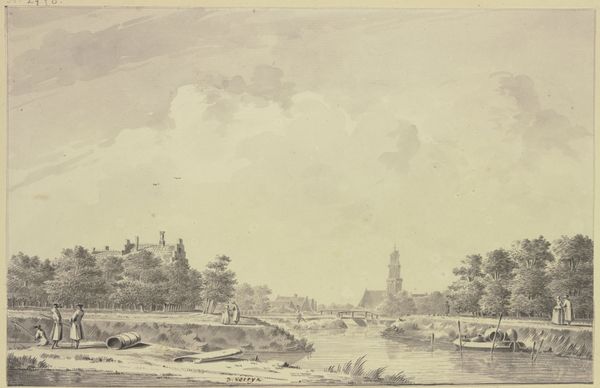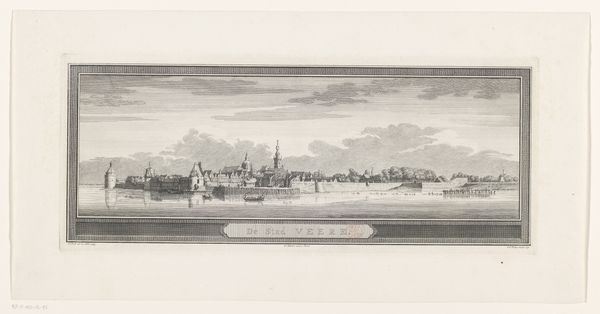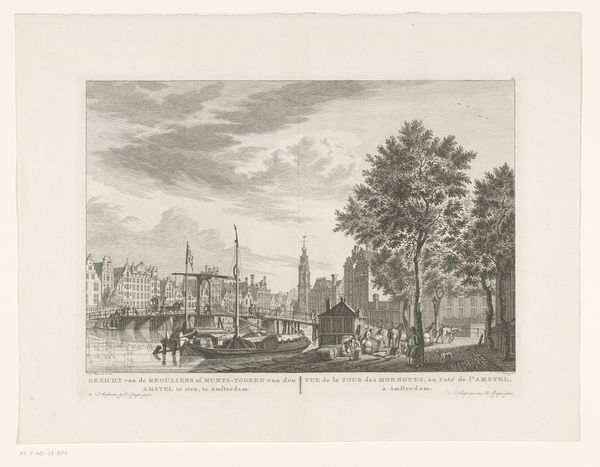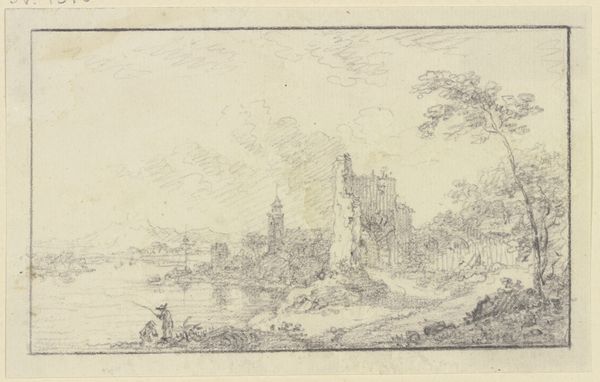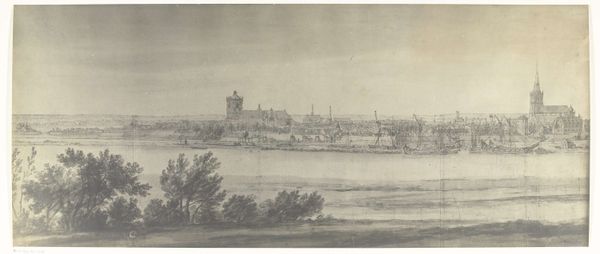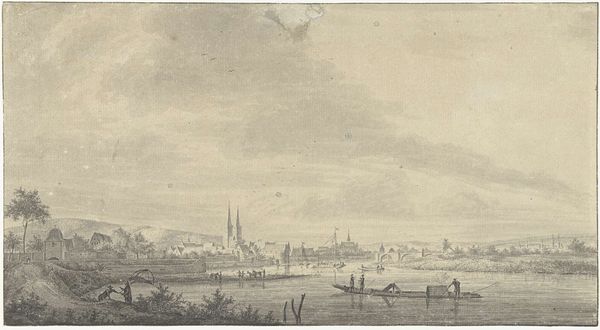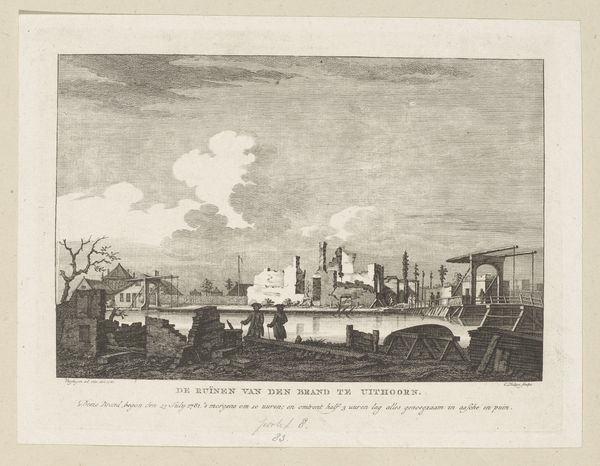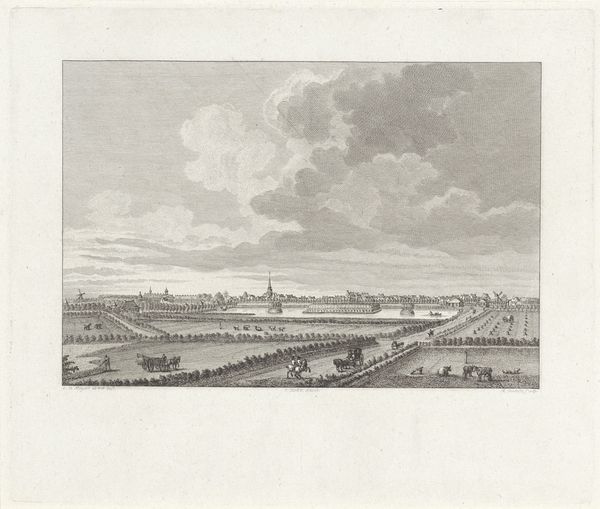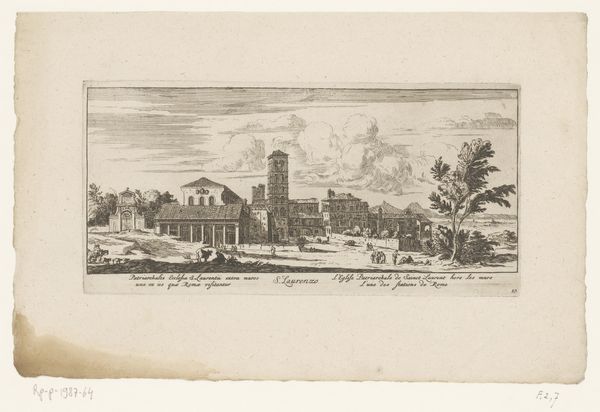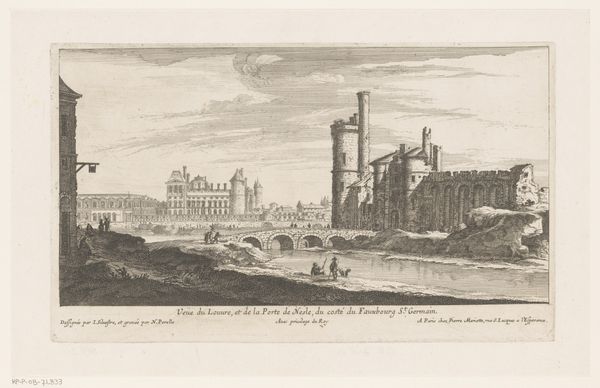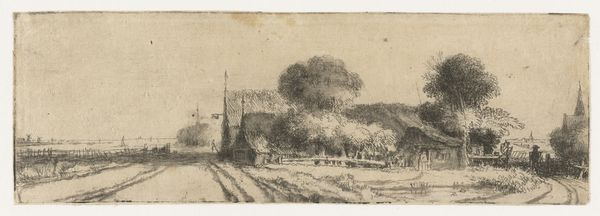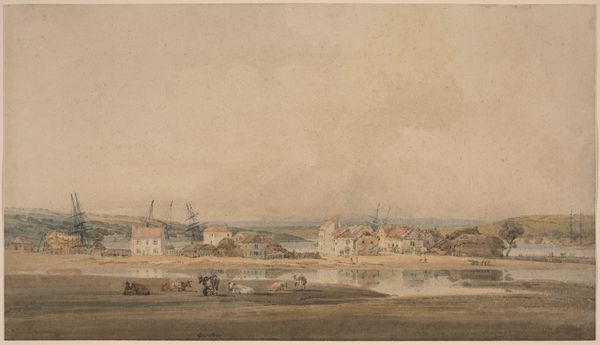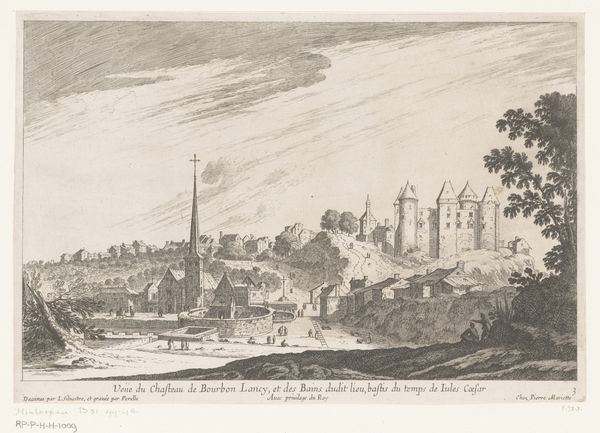
Gezicht op het kasteel van Vincennes, achter een rij bomen 1600 - 1650
0:00
0:00
drawing, pencil
#
drawing
#
dutch-golden-age
#
landscape
#
pencil
#
cityscape
#
watercolor
Dimensions: height 170 mm, width 295 mm
Copyright: Rijks Museum: Open Domain
Curator: Here at the Rijksmuseum, we have Abraham de Verwer's "View of the Castle of Vincennes, Behind a Row of Trees," created sometime between 1600 and 1650, executed in pencil. Editor: The scene has a beautifully muted atmosphere. There's such subtlety in the application of pencil to paper; the forms of trees, water and building seem about to dissolve in the grey air. Curator: De Verwer, working during the Dutch Golden Age, captures not just a castle but a moment in the socio-political landscape. Vincennes held strategic and symbolic importance, undergoing transformations reflective of France’s evolving power structures. We see labor invested in maintaining this key site of control and how art supported this power dynamic. Editor: Precisely, and it is visually striking how de Verwer employs a horizontal composition divided into distinct layers: the foreground vegetation, the line of trees acting as a screen, and the receding planes of the castle and sky. Observe the textures rendered solely through hatching and cross-hatching. The tonal range he achieves with limited materials is compelling. Curator: The drawing is very process-oriented, capturing an early stage, perhaps a preliminary sketch. Consider the cost of art during the Golden Age; De Verwer was producing this as a means to earn capital within a robust market for drawings and paintings depicting landscapes. Editor: I’d also call your attention to how the formal structure emphasizes the contrast between the natural and the constructed, between organic forms and geometric ones. It establishes tension and dynamism within the supposedly tranquil landscape. Curator: By depicting the landscape, and important structures such as the Castle of Vincennes, artists like De Verwer helped create a shared understanding, and promoted the development of the land. Editor: The economy of line and form are definitely a strength here. What began as an exploration of contrasts reveals something unique.
Comments
No comments
Be the first to comment and join the conversation on the ultimate creative platform.
